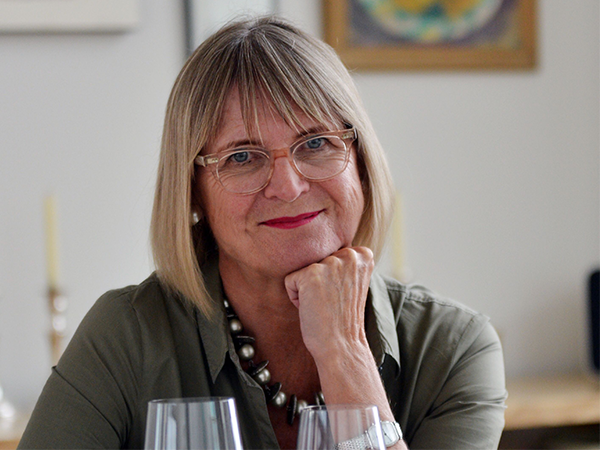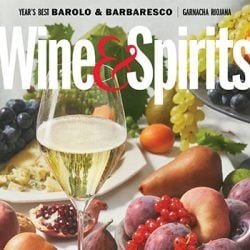Jancis Robinson dropped into NYC this past October to celebrate the release of the 8th Edition of The World Atlas of Wine. Widely considered the premier reference on wine, having sold 4.7 millions copies worldwide, it’s been revised once every six years since Hugh Johnson released the first edition in 1971; Robinson has worked as editor and co-author since the 5th Edition (2003) onward. Corey Warren met Robinson at Maialino restaurant to get the backstory on how the team decides what to include and not, and what they noted in the process.


When we settle down to do a new edition, we have several very long meetings with me, [Managing Editor] Gill Pitts, Hugh Johnson and Julia Harding. Sometimes [Publisher] Denise Bates sits in as well.
England has reached a point where it might deserve two pages instead of just one, but we didn’t want to appear too partisan. The Azores may have deserved some attention (Pico is the next big thing, after the Canary Islands). I would have liked to include a map of Northern Europe showing where the vineyards are [in Holland, Belgium and Scandinavia].
I try to keep abreast of the world of wine, but I’m a generalist. It wasn’t until we got the detailed consultant reports from the Czech Republic and Slovakia that I realized quite a lot of new varieties have been bred there. Along with the boom of low-intervention, traditional winemaking in that area, I thought it may have done with more detailed coverage.
It’s tricky to talk about natural or low-intervention wines. It’s really very polarizing. There are too many natural-wine zealots, and too many people from the other side dismissing it outright.
Were there any consistent, global changes that your consultants reported on?
The major global change is from the Seventh Edition, when they all said “Hey! Everyone’s [wines are] lightening up!” For this edition, all are reporting an earlier harvest and the climate-change effect.
Do you think that the current trend towards lighter wines will continue?
I’ve been around so long I’ve seen pendulums swing. I remember when white wine was the thing, and everybody was desperate to find a chardonnay vine. I wouldn’t be surprised if some influential wine person like Andrew Jefford said next week, “I really like great big wines,” and we saw a shift away [from lighter wines]. I do think there are too many skinny wines masquerading as quality. You still need fruit, you still need substance.
In your introduction to the Eighth Edition, you talk about the use of new technologies to map and understand terroir being adopted more globally.
It’s terribly interesting—any self-respecting back label will tell you what sort of soil the vineyard is on, and yet no one can explain exactly the mechanism of how that influences what’s in the glass. So, everybody thinks that it’s important, but can’t explain why. I think we’re at a very interesting point where the research is still not there, but it’s catching up. By the Ninth Edition, we’ll have much more cause-and-effect to explain. Every region will be mapping its soils much more clearly. For the Eighth Edition, what we’ve done is grabbed on the coattails of the regions that have really good soil maps [and have published those].


As the climate crisis progresses, do you think this Atlas will need to be updated at a more rapid pace?
Every six years is quite often enough. The interesting thing about climate change is that it hasn’t been totally maligned [in the wine world]. That shouldn’t be interpreted as me saying, “Climate change is great!” But [climate change] has created the potential for regions like England to make quality wine. I think wine and vineyards are a bit of a canary, showing these differences very early.
In the next edition, we’ll explore sustainability more holistically, including winery work, [the weight of] glass bottles, electric cars…
In the Eighth Edition, you include a new Bottom Line section, with an interesting info-graphic showing the cost in work hours of a glass or a bottle of wine.
I do recall an argument about how it should be portrayed. The managing editor and designer happened upon the “four-hour-shift” idea [showing the proportion of a bottle you could purchase with those wages]. That rounded nicely to the bottles, but I wasn’t sure [people would find the units relevant]. So, we added the hours you’d have to work to purchase an entire bottle just below the bottles.
I’ve always been very value conscious, maybe more than most of my peers. I’ve never believed that there’s a direct correlation between price and quality. I’ve had a discussion with Simon Loftus, who told me “I fell in love with wine through Mouton ’45,” and I’m very sad that young people might never be able to afford that [experience].
[Although] I don’t think that matters [as much as it once did], because in the old days, you had such a narrow range of fine wines and a very strict hierarchy at that; now the range is so wide and even what people think of as good wine is broadening, as well, to accommodate more styles. Young people have such a choice.
W&S December 2019 on sale now!
Search our December recommendations
Subscribe to read the December features
This story was featured in W&S December 2019.
Corey Warren is the Tastings Editor in addition to covering the wines of the Loire, Southern France, Argentina and South Africa.
This story appears in the print issue of December 2019.
Like what you read? Subscribe today.

















